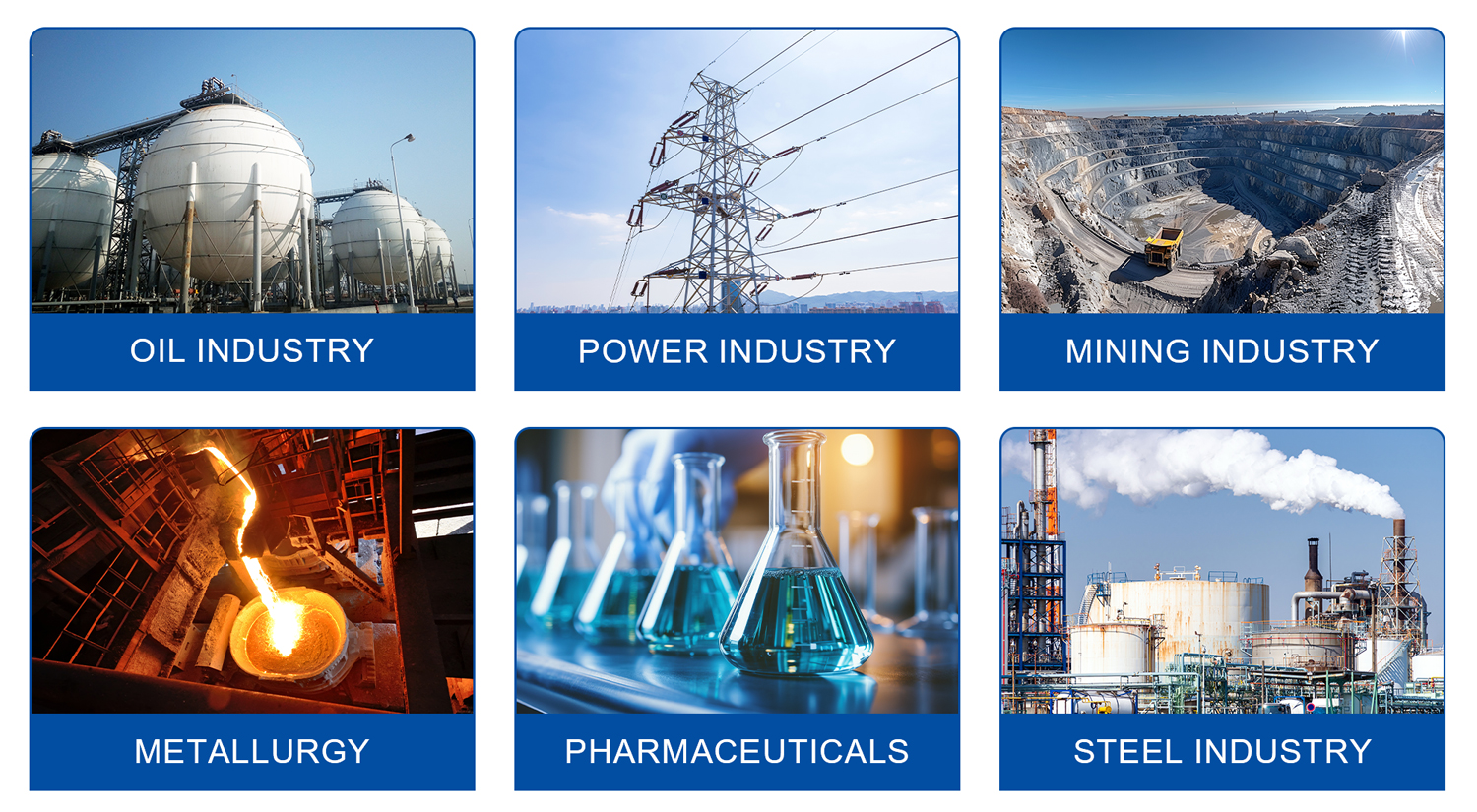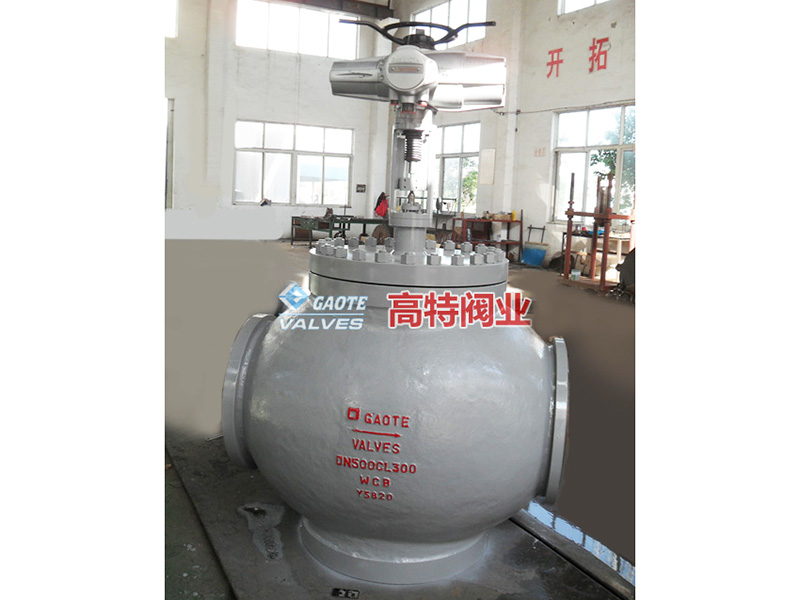Electric Regulating Valve
Electric Regulating Valve
Electric valve is a valve driven by an electric actuator, which can realize automatic control of fluid.

Electric valve is a valve driven by an electric actuator, which can realize automatic control of fluid. Unlike traditional manual valves, electric valves are remotely operated through electrical signals, which can achieve precise adjustment of parameters such as flow, pressure, temperature, etc., and are widely used in industrial automation and intelligent systems. Electric valves not only improve the control efficiency in industrial processes, but also reduce manual intervention and improve the safety and reliability of the system.
※ Structural Features
Valve body
The valve body of the electric valve is usually made of corrosion-resistant and high-temperature resistant materials, such as stainless steel, carbon steel, cast iron, etc., to adapt to various working environments. The design of the valve body can be divided into ball valves, butterfly valves, gate valves, etc. Ball valves are suitable for occasions that require fast opening and closing, while butterfly valves are often used in systems with large flow and low pressure difference. The internal flow channel design of the valve body emphasizes low resistance of the fluid to reduce pressure loss and energy consumption.
Electric actuator
The electric actuator is the core component of the electric valve, responsible for converting electrical signals into mechanical motion to drive the opening or adjustment of the valve. The actuator contains a motor, a gear transmission mechanism, a limit switch, and a control circuit. According to application requirements, the actuator can choose a DC motor, an AC motor, or a stepper motor to ensure the accuracy and stability of the valve action.
Control system
The control system is responsible for receiving control signals from the outside and transmitting them to the actuator. Common control signals include switching types (such as 24V DC voltage) and regulating types (such as 4-20mA, 0-10V analog signals). Through these signals, the control system can achieve precise adjustment of the valve opening to meet different control requirements such as flow and pressure.
Sealing and durability
The sealing performance of electric valves is very important. High-performance sealing materials (such as PTFE, rubber, etc.) are often used to ensure reliable sealing of valves under high pressure, high temperature or corrosive environments. Electric actuators generally use a higher protection level (such as IP65) to adapt to adverse factors such as dust and moisture in industrial environments.
※ Product Application
Petroleum and Chemical Industry
The petroleum, natural gas and chemical industries have extremely high requirements for fluid control. Electric valves are responsible for pipeline control, pressure regulation and flow control in these industries. The high sealing and corrosion resistance of electric valves give them significant advantages in conveying high-temperature, high-pressure or corrosive media, and can effectively ensure production safety and stability.
Power Industry
In power production, electric valves are widely used in fluid regulation of equipment such as boilers, cooling systems, and gas delivery systems. Electric valves ensure the efficient operation of power generation equipment by accurately adjusting the flow of water, steam and cooling media. Especially in power facilities such as nuclear power and thermal power, electric valves can ensure the automatic operation of the system and improve safety and reliability.
Water Supply and Drainage Industry
Electric valves are also widely used in urban water supply, sewage treatment and other fields. In the water supply system, electric valves are used to adjust the water flow and pipeline pressure to ensure the stability and efficiency of the water supply system. In sewage treatment plants, electric valves can be used for the control and automatic regulation of liquid flow, reduce manual intervention, and improve system operation efficiency.
HVAC System
Electric valves play an important role in HVAC systems, especially in air conditioning and heating systems in buildings. It can control the flow of cold and hot water, accurately adjust the temperature of the system, and ensure the comfort of the indoor environment. In addition, the electric valve can also be linked with the temperature control system to automatically adjust the flow according to temperature changes to ensure energy saving and efficient operation of the air conditioning system.
Food and Beverage Industry
In the process of food and beverage production, electric valves are used to control the delivery, mixing, filling and other links of liquids. Due to the issues of hygiene and food safety, electric valves often use food-grade stainless steel or other materials that meet hygiene standards to ensure that the product will not be contaminated during the fluid transmission process.
※ FAQ
What are the installation requirements for control valves?
The valve should be installed at the appropriate position of the pipeline to ensure that the flow direction is consistent with the direction indicated by the valve body; secondly, check whether the valve and its accessories are intact before installation to ensure that there is no damage; during installation, ensure that the pipeline connection is stable to avoid stress concentration and prevent damage to the valve; in addition, sufficient space should be provided for the valve to facilitate adjustment, inspection and maintenance; finally, the valve should be protected from excessive vibration or temperature, especially under high pressure and high temperature environments.
What are the common applications of temperature and pressure reducers?
Temperature and pressure reducers are widely used in many fields. They are mainly used in steam systems to reduce high-pressure steam to appropriate pressure to ensure safe operation of equipment. They are commonly used in power, fertilizer, food processing and other industries. They are also used in oil and gas pipelines, chemical production, pharmaceutical plants, etc. to ensure stable pipeline pressure and avoid system overpressure or excessive temperature. In addition, reducers are also used in HVAC, metallurgy and other industries to adjust the temperature and pressure of the fluid in the system to ensure the smooth progress of the process.
How to maintain medium and high pressure valves?
When maintaining medium and high pressure valves, first check the wear of key components such as valve body, valve seat, sealing ring and valve stem regularly. Clean the valve to prevent impurities from blocking and affecting operation. Check the operating performance of the valve to ensure flexible opening and closing without sticking. Check the sealing to prevent leakage and replace the seals if necessary. For valves that operate at high pressure for a long time, it is recommended to perform functional tests regularly to ensure their reliability under high pressure environment. In addition, check the connection parts of the valve to avoid looseness or leakage caused by vibration or corrosion.
※ Industry Applications

※ Company Introduction
Jiangsu Gaote Valve Industry Co., Ltd. was established in 2003. The company is a medium-sized enterprise specializing in the production of various petrochemical and power station valve series. The main products include high-temperature and high-pressure power station valves, gate valves, stop valves, ball valves, check valves, butterfly valves, instrument valves, needle valves, regulating valves and non-standard special valves for power stations, etc. Hundreds of varieties and specifications of valves, products are widely used in power, petrochemical, metallurgy, pharmaceutical, mining, steel, mining, water supply and drainage and other industries. The company's R&D team actively explores the field of valves and explores a path of industrial upgrading from ordinary valves to valves.
Jiangsu Gaote Valve Industry Co., Ltd. is an innovative demonstration enterprise of small and medium-sized enterprises in Jiangsu Province. It is located in the Economic Development Zone of Funing County, Jiangsu Province, and National Highway 204 passes through the territory. The company has passed the ISO9001 quality system certification and the special equipment manufacturing license of the People's Republic of China. It is a member unit of the power station accessories supply of the State Power Corporation, a member unit of the Sinopec Equipment Resources Market, and a member unit of the first-level supply network of China National Petroleum Corporation. It has gradually established a good reputation in power station valves. The company has an advanced management mechanism, with fixed assets of more than 30 million yuan, more than 100 sets of sophisticated mechanical processing equipment and inspection and testing equipment, and more than 10 technical R&D personnel, forming an integrated production, sales and service.










